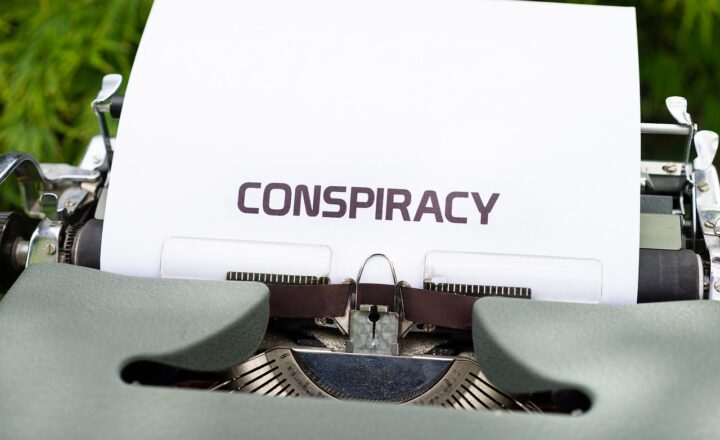Top Secret CIA Operations That Sound Like Conspiracy Theories – But Aren’t
November 15, 2024

When one thinks of the CIA, images of shadowy figures, clandestine operations, and espionage come to mind. The agency, officially established in 1947, has conducted numerous operations that at times blur the line between reality and conspiracy theory. Some of these operations are so astonishing and outrageous that they seem too bizarre to be true. However, they are very much real. This article delves into some of the most intriguing CIA operations that may sound like conspiracy theories but are well-documented historical events.
1. Operation MK-Ultra: The Mind Control Project
One of the most infamous CIA operations, MK-Ultra involved experimentation on unwitting subjects to develop techniques for mind control, with the premise that the agency could manipulate human behavior.
> **Background**
Initiated in the 1950s during the Cold War, MK-Ultra aimed to explore the potential of various substances, including LSD, to control human thoughts and actions. It was driven by the fear that the Soviet Union had developed advanced interrogation techniques. The program was infamous for its unethical methods, which included drugging individuals without their consent.
> **Key Events**
Subjects were often selected from vulnerable populations, such as drug addicts and the mentally ill. Many experiments took place in hospitals, universities, and even CIA facilities. One notorious case involved Dr. Sidney Gottlieb, who oversaw the program and authorized troubling experiments lacking ethical standards.
> **The Aftermath**
The project was officially terminated in the 1970s, but the details remained classified for decades. In 1975, the Church Committee hearings in the U.S. Senate revealed the extent of MK-Ultra. The public outcry and growing awareness of the agency’s ethical violations led to more significant oversight of intelligence operations. Although much of the information is still classified, MK-Ultra’s existence is documented in various CIA records.
2. Operation Northwoods: The False Flag Proposal
In an astonishing proposal put forth in 1962, the CIA suggested orchestrating terrorist attacks against American citizens as a pretext for military action against Cuba.
> **Background**
During the Cold War, the U.S. was highly concerned about Cuba and Fidel Castro’s regime. In a bid to galvanize support for military action against the island, the Joint Chiefs of Staff devised a plan to create the illusion of a Cuban threat against American citizens.
> **Key Events**
Plans included staging bombings, hijackings, and other terrorist acts, all aimed at inciting war sentiments among the American public. These bold ideas included sinking a U.S. ship or faking a Cuban attack on a civilian aircraft. In the end, the proposal was rejected by President John F. Kennedy, but the very existence of such plans raised eyebrows about the lengths the government may consider to provoke conflict.
> **The Aftermath**
Operation Northwoods was declassified in the late 1990s, drawing heavy criticism for its immorality and recklessness. The revelation led to widespread public disbelief and further fueled countless conspiracy theories regarding CIA operations.
3. Operation Gladio: Reluctant Allies Against Communism
Operation Gladio involved covert NATO operations across Europe during the Cold War to counter potential communist expansion.
> **Background**
The CIA, alongside NATO and various European intelligence agencies, established secret paramilitary groups in Europe meant to act in the event of a Warsaw Pact invasion. Sometimes referred to as a “stay-behind” army, these factions were meant to conduct guerrilla warfare instigated against foreign invaders.
> **Key Events**
While these units were initially focused on external threats, some groups became involved in domestic politics, conducting terrorist acts to create anti-communist sentiments. Reports of their involvement in bombings during the 1970s and 1980s in Italy highlighted a troubling reflection on how far they were willing to go.
> **The Aftermath**
The existence of Operation Gladio was exposed in the 1990s, forever changing the perception of Cold War intelligence operations. The implications raised questions about democracy and the extent to which governments might manipulate periods of crisis.
4. Operation CHAOS: Surveillance and Disruption of Dissent
Throughout the 1960s and 1970s, the CIA conducted Operation CHAOS to surveil and neutralize domestic anti-war movements and other dissenters.
> **Background**
As the Vietnam War sparked protests and mass dissent, the CIA monitored groups like the Students for a Democratic Society (SDS) and anti-war activists. The operation aimed not only to gather intelligence on these movements but also to disrupt their activities.
> **Key Events**
Operatives infiltrated various volunteer organizations and compiled lists of activists. The CIA extended its reach into universities, religious organizations, and civil rights groups. Intelligence was often shared with police departments, escalating state efforts against protesters.
> **The Aftermath**
Operation CHAOS was exposed in Congressional hearings and became one of the catalysts for reforms that imposed stricter oversight on domestic surveillance. The implications of chilling civil liberties continue to reverberate today.
Conclusion: The Fine Line Between Reality and Conspiracy
These CIA operations demonstrate how the line between fact and conspiracy can often become blurred. Audacious, often questionable actions taken in the name of national security challenge our perceptions of government integrity and raise ethical concerns about the lengths an agency might go to achieve its objectives. While some still debate the existence or validity of certain “conspiracy theories,” these documented operations remind us that reality can indeed be stranger than fiction. As we continue to navigate the complexities of modern-day intelligence, it’s essential to remain vigilant and foster an informed public to safeguard civil liberties against encroachments.
In our age of disinformation and mistrust, understanding the past remains an essential element for discerning truth from falsehood. Whether or not these operations shake our faith in governmental oversight, they serve as a vital reminder that skepticism and curiosity are crucial to a healthy democracy.







